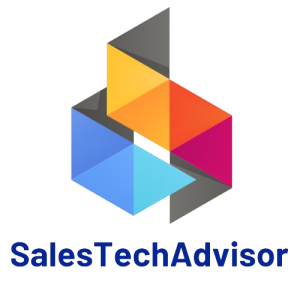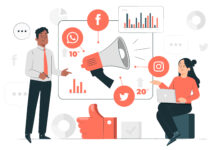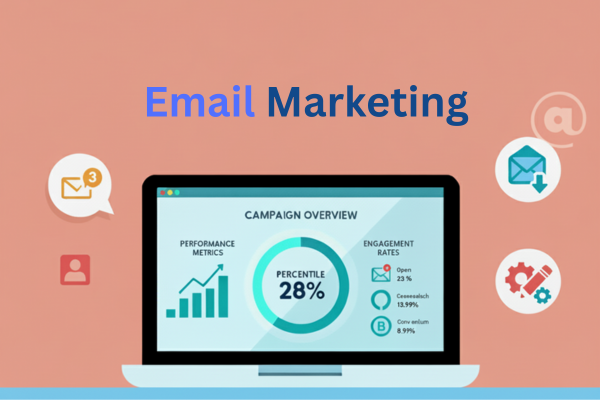In 2025, the B2B email ecosystem has evolved into a complex, AI-saturated environment. Artificial intelligence facilitates content generation, segmentation, and predictive sending at unprecedented scale, yet this proliferation of automated messaging has created a paradox: the very technology designed to increase engagement now risks undermining it.
The challenge for modern B2B marketers is not merely to leverage AI but to employ AI Email Marketing Strategies that maintain relevance, authenticity, and strategic impact. Companies that master this integration achieve measurable improvements in lead conversion, pipeline velocity, and brand authority.
1. Understanding the Current Landscape
The widespread adoption of generative AI has transformed B2B communication. While AI expedites campaign creation, the resulting volume often generates redundancy, repetitive phrasing, and diminished differentiation. Consequently, decision-makers increasingly filter automated messaging, consciously or unconsciously, making engagement a function of strategic precision rather than output volume.
Recent data indicates that more than 50% of B2B marketers rely on generative AI to produce email content. While efficiency has increased, open and response rates are declining when messages lack human oversight or contextual relevance.
The implications are significant: brands must move beyond conventional metrics like opens and clicks and focus on pipeline-influencing engagement.
2. Precision as a Competitive Advantage
Advanced segmentation is a cornerstone of effective AI Email Marketing Strategies. Traditional segmentation based on industry or job title is insufficient. Modern approaches require the integration of firmographic, technographic, and behavioral data to produce actionable insights.
Recommended segmentation dimensions include:
- Firmographics: Industry vertical, company size, geographic market
- Technographics: Existing software stack or platform adoption
- Intent Data: Web activity, content downloads, and prior engagement
- Behavioral Metrics: Email open frequency, link interaction, and conversion propensity
Segmentation informed by intent data ensures that each email aligns with a recipient’s position in the buying journey, significantly increasing engagement probability.
3. Communicating Relevance Instantly
The evolution of AI-driven spam detection necessitates a sophisticated approach to subject lines and preheaders. Effective AI Email Marketing Strategies leverage contextual precision and value-oriented messaging.
Strategic Approaches for Email Performance:
- Conciseness: Maintain 6–8 words to optimize visibility on mobile devices
- Contextual Personalization: Reference behavioral or firmographic indicators rather than generic placeholders
- Credibility Indicators: Incorporate verifiable data points or insights relevant to the recipient’s domain
Studies indicate that subject lines incorporating relevant data points or industry-specific terminology tend to achieve higher open rates in B2B email campaigns.
4. Human Oversight in AI-Driven Messaging
AI-generated copy facilitates operational efficiency; however, human oversight remains essential to maintain tone, context, and strategic alignment. Effective implementation includes:
- AI-Assisted Drafting: Use AI to generate base messaging or segmentation insights
- Human Review: Validate content for tone, accuracy, and compliance
- Contextual Personalization: Refine messaging based on recipient intent and historical engagement
Such oversight ensures that campaigns remain strategically coherent, fostering higher engagement and trust.
5. Aligning Timing with Buyer Intent
Modern AI Email Marketing Strategies employ behavioral triggers to deliver messages precisely when they are most relevant. Static drip sequences are increasingly ineffective in AI-saturated inboxes.
Key Use Cases and Implementation Scenarios:
- Re-engagement: Triggered by inactivity over defined periods
- Content-Specific Follow-ups: Initiated after downloading research or visiting specific product pages
- Lead Scoring-Driven Outreach: Automated escalation based on engagement scores
These triggers prioritize signal over volume, ensuring that outreach aligns with demonstrated intent rather than arbitrary schedules.
6. Enhancing Engagement
In an environment dominated by textual AI-generated emails, visual and interactive elements are critical to differentiation. High-performing campaigns leverage:
- Infographics and Charts: Present complex information concisely
- Short Video Snippets: Embed 30–60 second clips for personalized messaging
- Interactive Modules: AMP-based polls or calculators to facilitate engagement without redirecting users
Research suggests that incorporating structured visual content, such as charts, infographics, and graphics, into emails can significantly increase click-through rates compared to text-only campaigns.
7. Deliverability and Compliance
High engagement is contingent upon deliverability. AI Email Marketing Strategies require rigorous domain and data management:
- Domain Authentication: Implement SPF, DKIM, and DMARC protocols
- List Hygiene: Prune inactive subscribers every 90 days
- Warm-Up Protocols: Gradually increase volume when deploying new IPs or domains
- Complaint Monitoring: Maintain complaint rates below 0.1% to avoid penalization
Compliance with GDPR, CAN-SPAM, and emerging Indian DPDP regulations ensures sustainable, high-quality engagement.
8. From Reporting to Predictive Insights
AI analytics provide capabilities beyond descriptive reporting. Predictive models can:
- Identify leads most likely to engage based on prior behavior
- Optimize send times and content dynamically
- Detect early signs of engagement fatigue to adjust frequency
Organizations that combine AI-driven analytics with strategic human interpretation tend to achieve significantly higher ROI on B2B email campaigns compared to relying on AI or human analysis alone.
9. Beyond Opens and Clicks
In 2025, the efficacy of B2B email campaigns is measured by tangible business outcomes:
- Pipeline Influence: Leads progressing to sales-qualified opportunities
- Conversion Velocity: Time from initial email to closed deal
- Engagement Depth: Interactions with content and resources beyond the initial email
These metrics align marketing KPIs with organizational objectives, reinforcing accountability and strategic impact.
10. The Human Advantage in AI-Driven Campaigns
AI generates content, but industry authority is cultivated through human insight. Marketers should:
- Publish commentary, analysis, and predictions from internal experts
- Encourage two-way communication to foster trust
- Provide actionable intelligence rather than generic updates
Brands that establish thought leadership via email maintain higher engagement, differentiation, and credibility.
Conclusion
AI Email Marketing Strategies in 2025 require a hybrid approach that balances automation with human insight. Success in this landscape is no longer determined by the sheer volume of emails sent but by the effectiveness of precision-targeted segmentation, the use of predictive and behavioral triggers, and the delivery of authentic, human-driven messaging. Additionally, rigorous compliance and deliverability practices ensure that emails reach their intended audience while maintaining trust and credibility.
Equally important is data-driven optimization, which enables continuous refinement of campaigns for measurable business outcomes. Organizations that adopt these comprehensive strategies are better equipped to cut through AI-generated noise, drive sustainable pipeline growth, and establish themselves as authoritative leaders within their industries.
I hope you find the above content helpful. For more such informative content, please visit salestechadvisor
FAQs:
1. How do AI Email Marketing Strategies differ from traditional automation?
AI strategies leverage predictive insights, real-time behavioral data, and content personalization at scale, surpassing rule-based email automation.
2. Can AI-generated content maintain authenticity?
Yes, when combined with human oversight that ensures contextual relevance, tone accuracy, and compliance with brand guidelines.
3. Why is deliverability critical in 2025?
AI filters and ISP algorithms prioritize engagement and authenticity. Poorly managed domains or lists reduce reach and trust.
4. Which tools are effective for AI-driven B2B email campaigns?
Platforms such as HubSpot, Salesforce Einstein, and Mailchimp AI offer predictive segmentation, dynamic personalization, and analytics integration.
5. How should small B2B firms start with AI Email Marketing Strategies?
Begin with AI-powered subject line optimization and engagement analytics, scaling automation gradually to maximize ROI.









